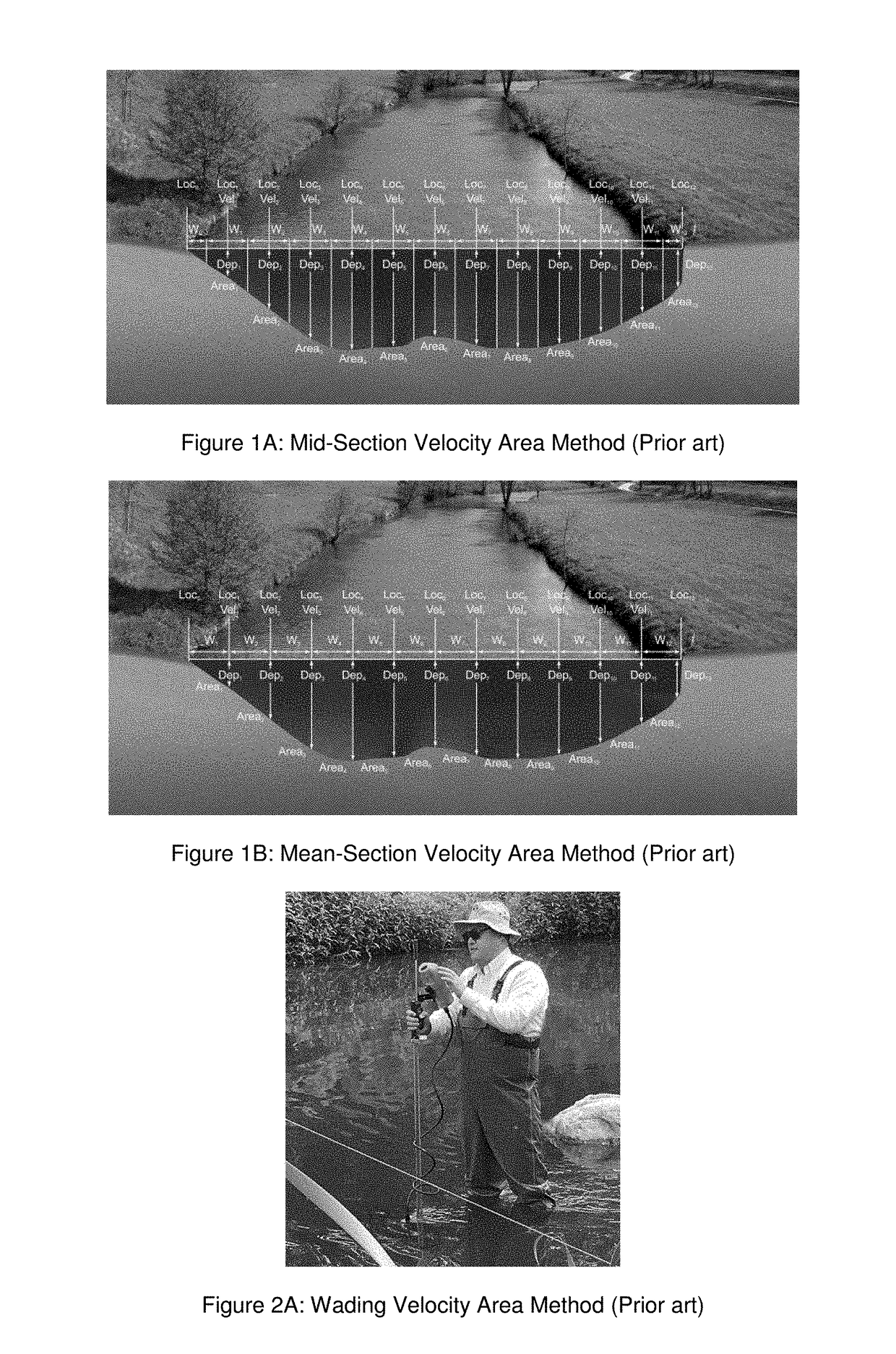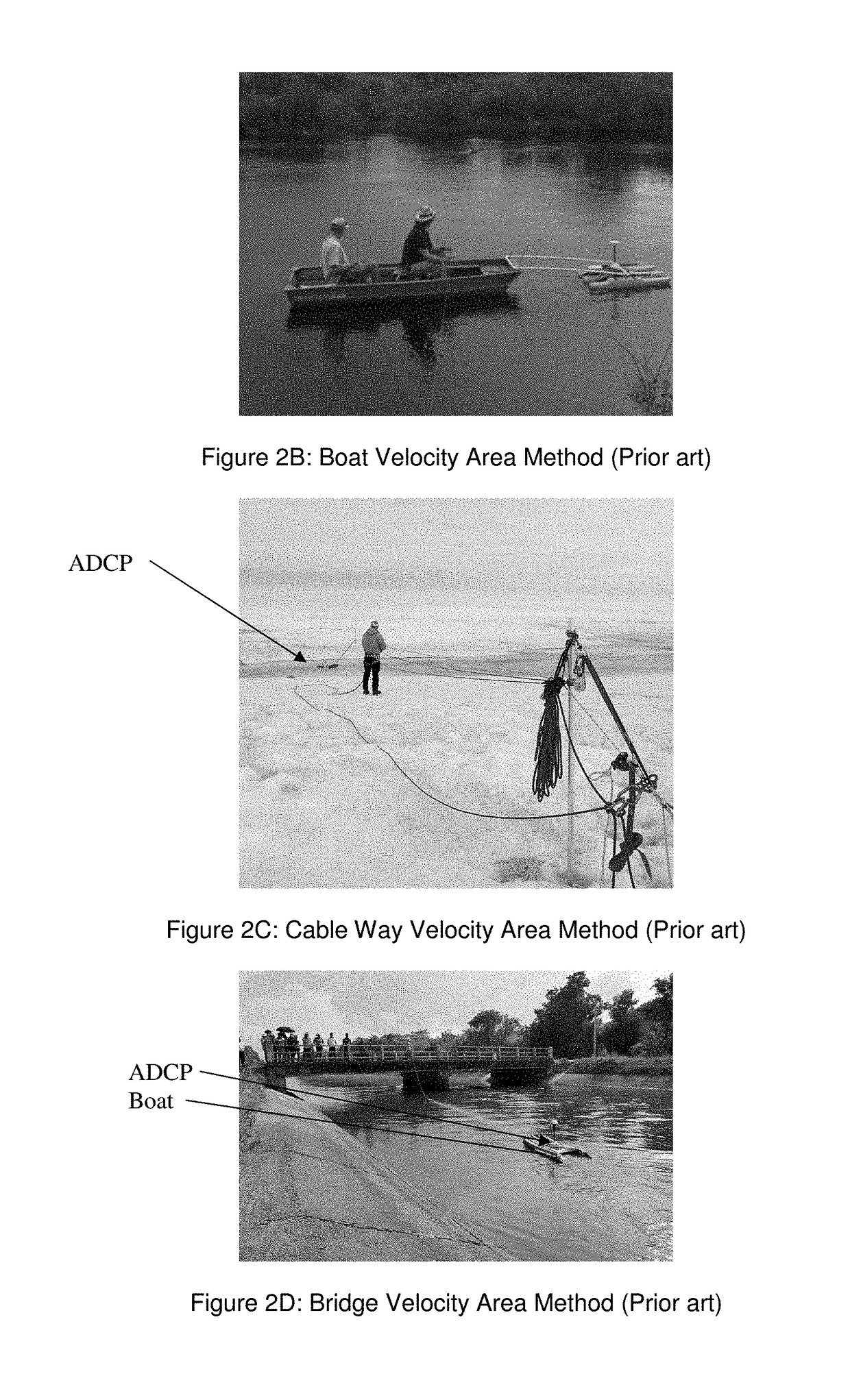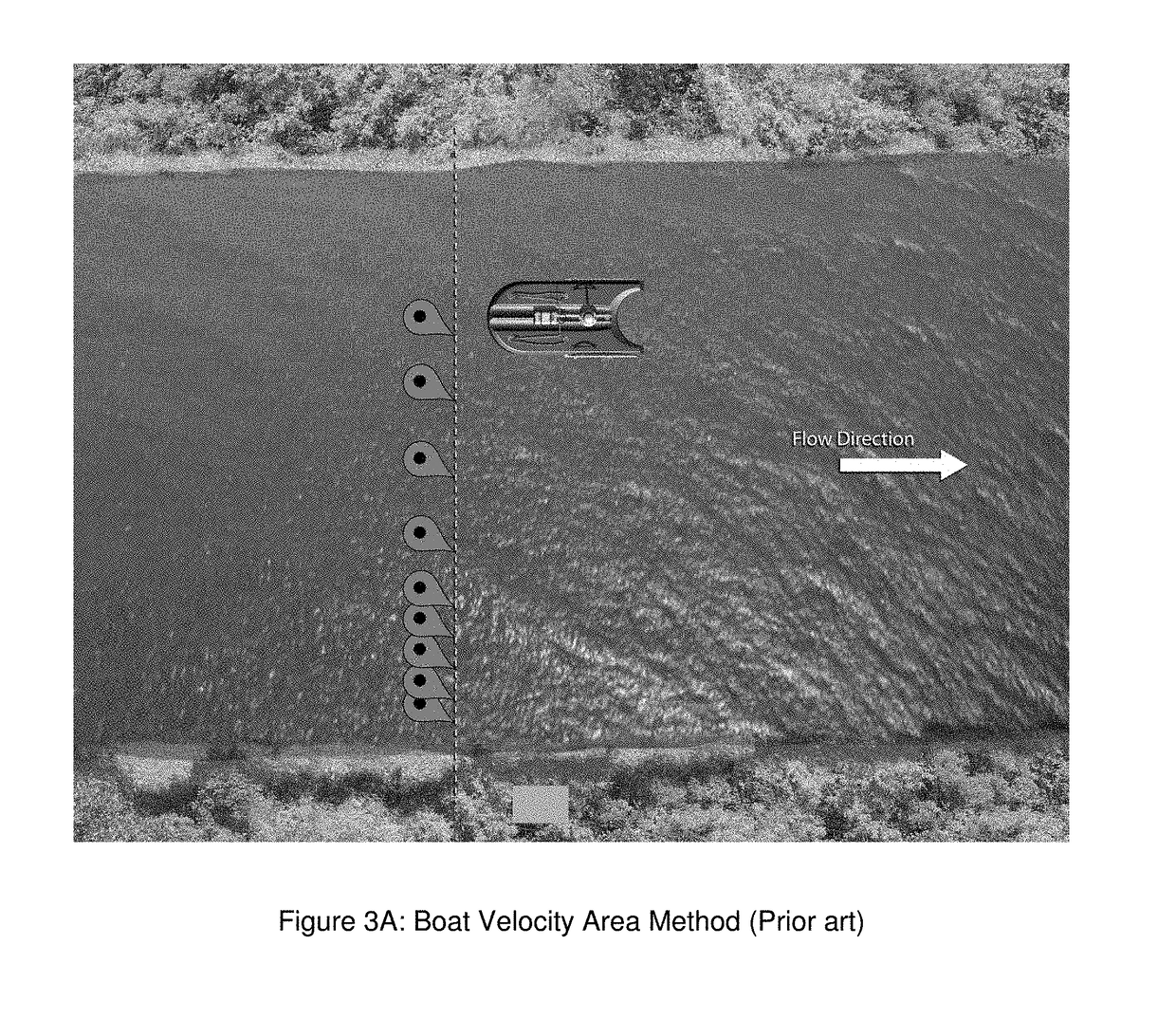Technique to measure the distance between stations using dgps/rtk GPS in the velocity area method (stationary) with an acoustic doppler current profiler
a technology of acoustic doppler current profiler and velocity area method, which is applied in the direction of instruments, using reradiation, process and machine control, etc., can solve the problems of inaccuracy in adcp data collection, site selection limit, and site needing a walkway/bridge, etc., and achieves the effect of more accurate data measurement and greater accuracy
- Summary
- Abstract
- Description
- Claims
- Application Information
AI Technical Summary
Benefits of technology
Problems solved by technology
Method used
Image
Examples
Embodiment Construction
FIGS. 4 and 5
[0050]In summary, the present invention provides the ability to measure distance between stations (aka herein as “panels”) using DGPS / RTK GPS in stationary software routines that resolves the above mentioned limitations. With the help of this GPS functionality, a user does not need a tape measure to make an ADCP stationary measurement and will collect accurate location of each station. According to the present invention, the user provides a projection line, e.g., using 2 GPS locations at the measurement site, to project each station locations to that line (which is known herein as a virtual tag line), e.g., based upon implementing the algorithm having the equations described in relation to FIG. 4 and the steps in the flowchart shown in FIG. 5 below.
The Algorithm Having Equations / Steps to Calculate Distance Between Stations Using GPS
[0051]By way of example, a controller like element 20b (FIG. 6A) having a signal processor like element 20b′ (FIG. 6A) may be configured to ...
PUM
 Login to View More
Login to View More Abstract
Description
Claims
Application Information
 Login to View More
Login to View More - R&D
- Intellectual Property
- Life Sciences
- Materials
- Tech Scout
- Unparalleled Data Quality
- Higher Quality Content
- 60% Fewer Hallucinations
Browse by: Latest US Patents, China's latest patents, Technical Efficacy Thesaurus, Application Domain, Technology Topic, Popular Technical Reports.
© 2025 PatSnap. All rights reserved.Legal|Privacy policy|Modern Slavery Act Transparency Statement|Sitemap|About US| Contact US: help@patsnap.com



